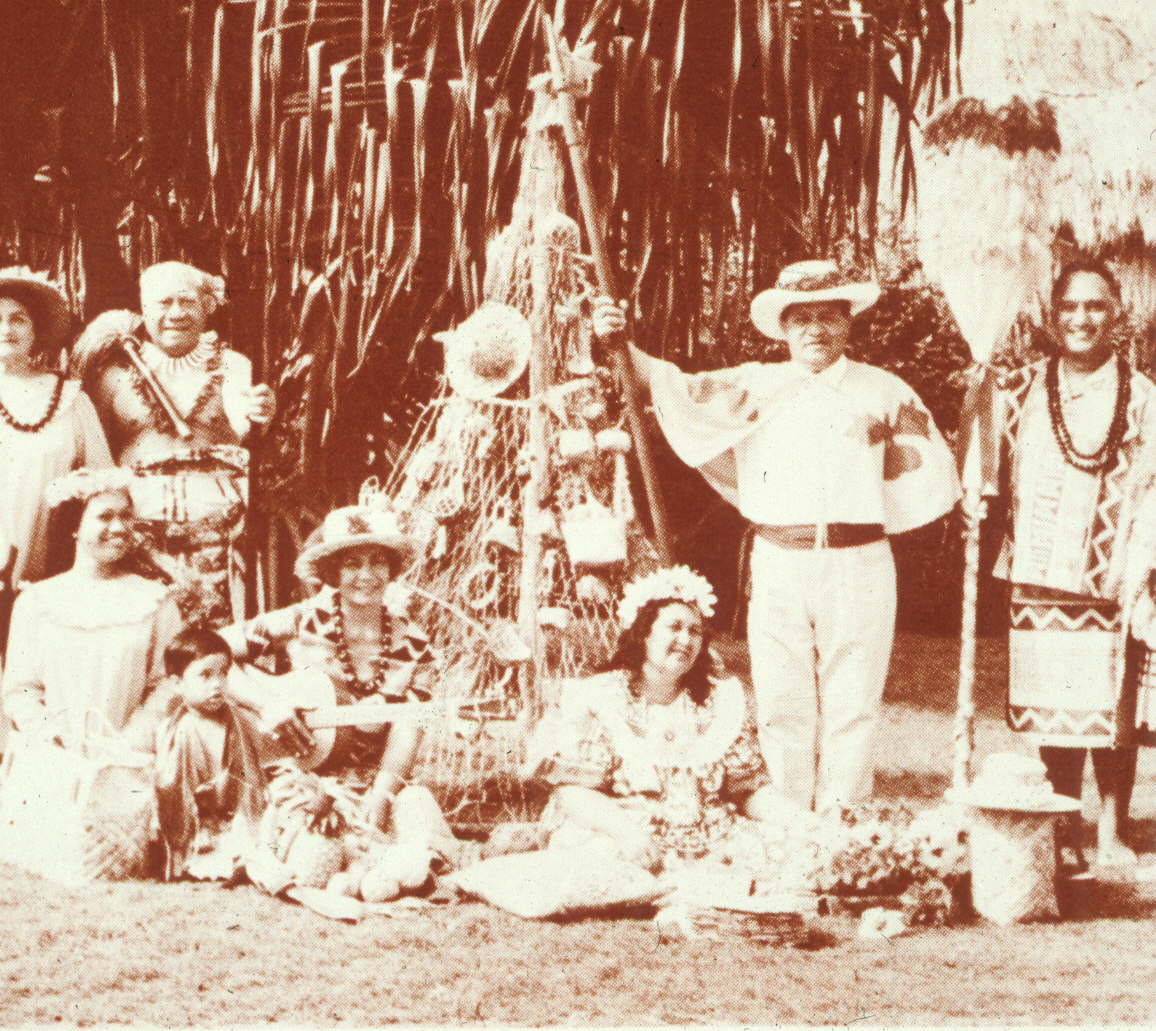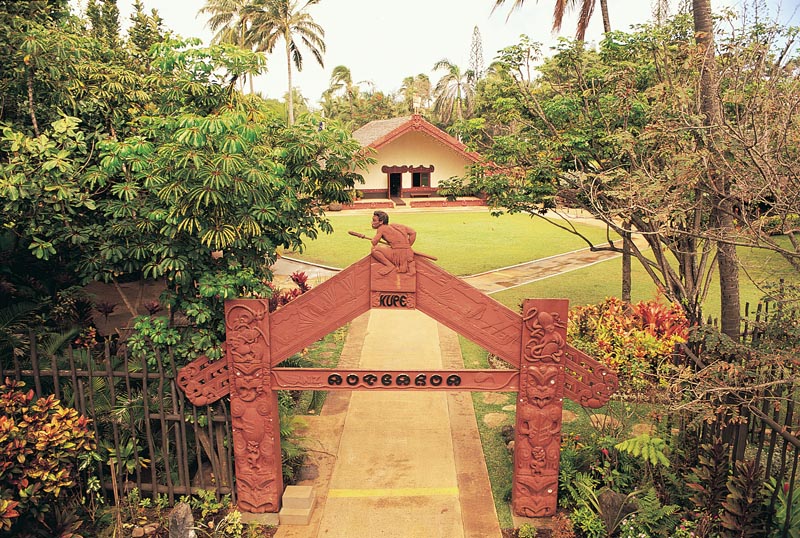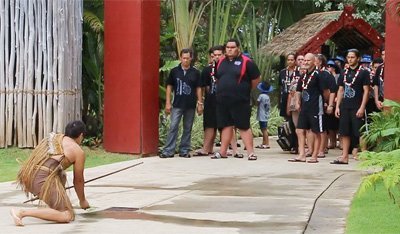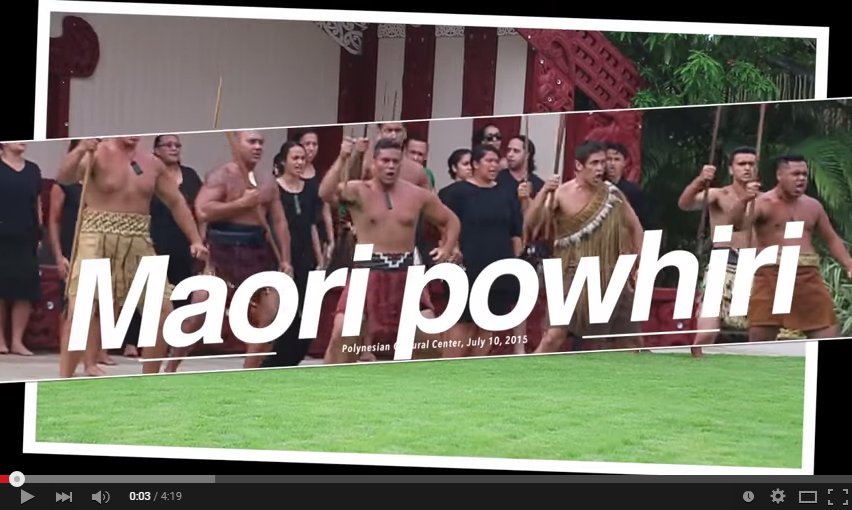First, some PCC “special event” history: In the early decades of the Polynesian Cultural Center each village celebrated at least one “culture day” every year — sometimes more, if a very special visitor came. Some of these reflected national and/or traditional holidays, while others were simply enhanced extensions of regular daily activities but they also included compatriots and family members from the community and back in the islands, special decorations and performances, as well as invited guests, officials and VIPs.

A little over 20 years ago we morphed most of these into a series of what we called annual “special events.” Some of these were competitions, held in the Pacific Theater with cash prizes. We got creative with things such as Haunted Lagoon — our night-time Halloween-themed canoe rides, and staged a few other limited appearances with Pacific cultural overtones. Old-timers may recall, in two examples of the latter, years ago we imported Fijian firewalkers from the island of Beqa, and also brought in the Tjapukai Australian aborigine group for a series of shows.
Two months ago the PCC staged its 23rd annual Samoan World Fireknife Championships and We Are Samoa Festival. At the end of that, we announced that as our most successful special event, PCC plans to continue it each May; BUT we also announced that our other special events would either be retired or significantly modified. For example, this month the Tahitian Village elected not hold any special activities for Bastille Day — a major cultural holiday in French Polynesia, while the Moanikeala Hula Festival earlier this year turned into a hō’ike or exhibition by a small number of outside hula groups under the banyan tree in the Hawaiian Village. It was a very special experience.
PCC’s 2015 Te Manahua Festival: The Polynesian Cultural Center’s Maori event, likewise, has undergone a series of changes over the years. Early celebrations of Māori culture and kapa haka were traditionally centered on the enclosed marae — referring to the communal or special place in the village, then moved into the Pacific Theater for more than a decade; but starting this year, Te Manahua took place once again on the marae.

PCC 14
As impressive as the PCC’s Pacific Theater is, there was also a special spirit about this Māori festival on July 11, 2015, held once again in the Māori Village.
Rāhira Makekau, PCC’s Maori Cultural Performance Specialist, noted four larger groups participated in this year’s Te Manahua — “three from New Zealand, and judges from New Zealand and their non-competing group, plus a local group, so we were pretty excited.”
The three competing groups were:
- Te Toka Tū Moana, comprised of BYU–Hawaii students and Māori from Laie and the surrounding communities, who took first place. To see why for yourself, follow the link: https://youtu.be/PNZ5UGqGt9I
- Teawhiorangi, kapa haka group from Taupo Nui Atea public high school in Taupo, central North Island, New Zealand, which won the competition in 2013. Have a look: https://youtu.be/10iUWEiCprw
- Te Iti o Tāhuna from Queenstown (and surrounding towns), South Island, New Zealand: https://youtu.be/9hymjiE-yQg “We’re delighted they came all the way from South Island,” Makekau said. She noted past festivals also attracted Maori groups from Australia, England and the U.S. mainland.
- And Nga Tākere Nui o Nga Waka, a collaborative group of highly skilled kapa haka practitioners who acted as judges this year and also shared their considerable talents in exhibition. “They’re actually some of the top performers in the country,” she continued. “They come from the top groups. Some of them had been here before, so they got together and decided to come again; but they were not competing.”
Makekau also pointed out there were several smaller groups participating in the Haka Hard! and Poi E events later in the afternoon.
Aotearoa Islands manager Kim Makekau said one of the special aspects of Te Manahua is seeing the local whanau [younger people] carry on the customs and traditions of kapa haka.”
“What was so special about this year to me,” said Rāhira Makekau , “is that we decided to follow the example of the Hawaiian Village and hold Te Manahua on the marae. We changed a lot of what we used to do in the past.
“What’s also special is that we had a lot of support from the community.” She added that many of those community members got together with all of the visiting Māori for a potluck dinner at the end of the day, which is typical of Māori culture. “We’re humbled by their support and the way the community rallied around us.”
“We also appreciate all of the guests and everyone who helped us celebrate our Māori culture.”
Powhiri ceremony welcomes visitors: On July 10, 2015, the morning before this year’s Te Manahua, the Māori Village put on a powhiri or traditional welcoming ceremony for the visiting groups.

That ceremony began with village women chanting as the visitors lined up at the main entrance to the marae. With stylized and threatening motions, a young man of the village presented a symbol of friendship to the group. Their acceptance of it indicated they came with peaceful intentions. Normally the rest of the ceremony would have taken place on the grassy area fronting the main meeting house, but a sudden downpour drove everyone inside. Again as is customary, the hosts and visitors sat opposite each other. The hosts presented chants, speeches and songs of welcome, and the visitors responded likewise.
At the end it was time for everyone to hongi — press noses and foreheads in the traditional Māori greeting of friendship, indeed even kinship as the visitors became one with the villagers.

Iraia Bailey, a PCC alumnus originally from New Zealand, gave one of the speeches on behalf of the village. He said he has since returned to Aotearoa and started doctoral studies in Māori language back home, after finishing a bachelor’s degree in Maori at the University of Waikato; “but I started off learning Māori right here. I hope I can help increase the use of te reo Māori [the Māori language] wherever I can.”
Part of Bailey’s speech — and traditional mannerisms — can be seen in this brief compilation from the powhiri ceremony:
Kia ora!
 Mike Foley, who has worked off-and-on
Mike Foley, who has worked off-and-on
at the Polynesian Cultural Center since
1968, has been a full-time freelance
writer and digital media specialist since
2002, and had a long career in marketing
communications and PR before that. He
learned to speak fluent Samoan as a
Mormon missionary before moving to Laie
in 1967 — still does, and he has traveled
extensively over the years throughout
Polynesia and other Pacific islands. Foley
is mostly retired now, but continues to
contribute to various PCC and other media.


Recent Comments